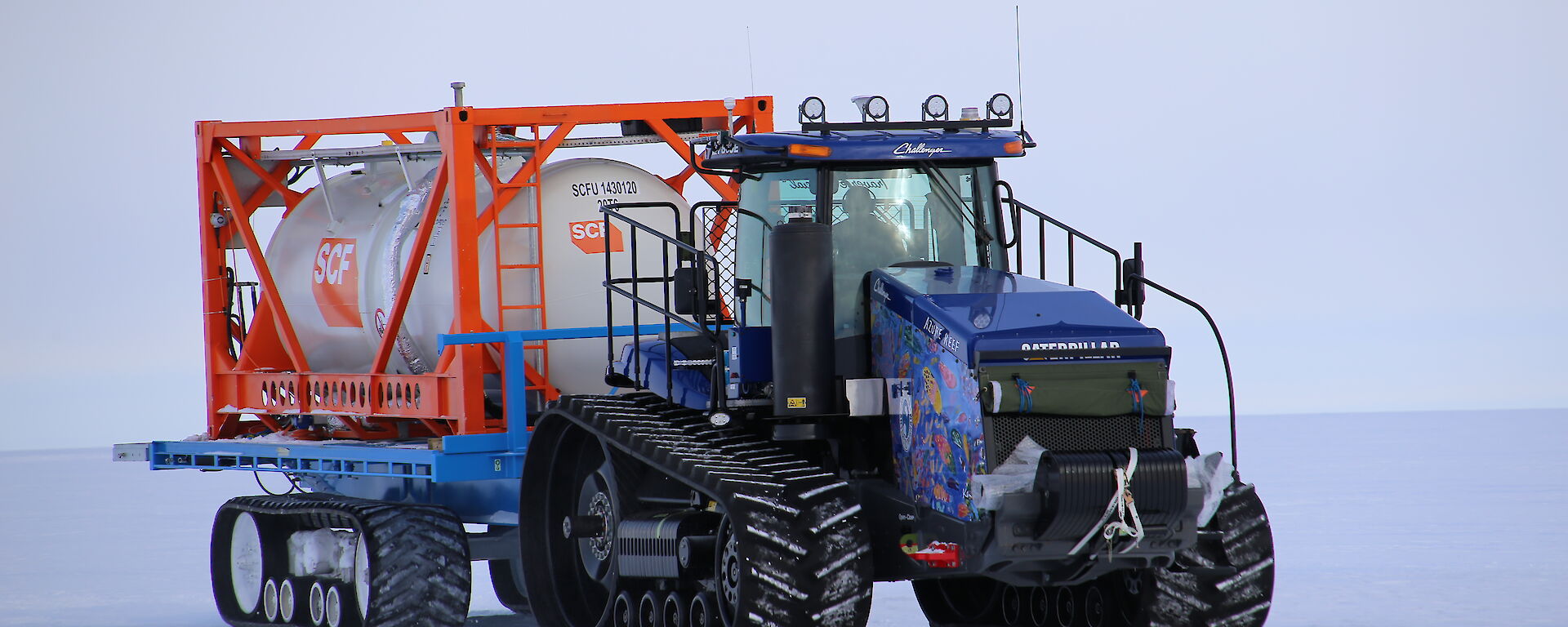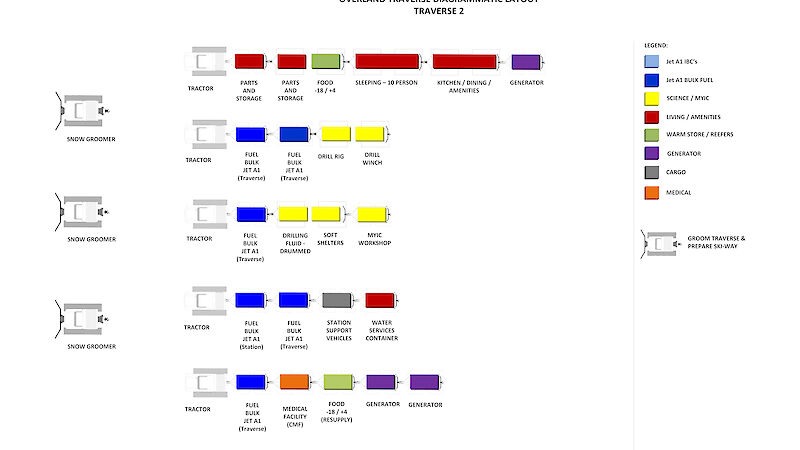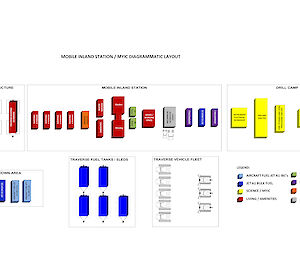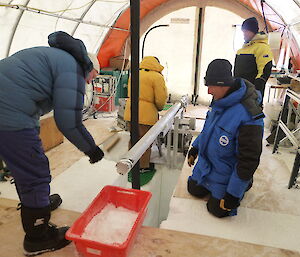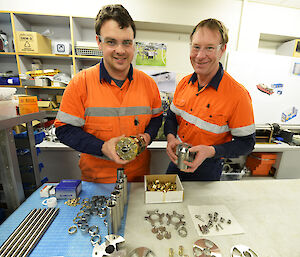In 2021*, the first major Australian Antarctic traverse in decades will depart Casey to deliver a mobile inland station to one of the coldest places on Earth.
Five bespoke tractors (see side bar), three snow groomers, 28 sleds, fuel, food and the infrastructure to support 16 people drilling for an ice core dating back more than one million years, will traverse 1100 kilometres to Little Dome C in East Antarctica.
Traverse Systems Lead Project Officer, Anthony Hull, said the expedition would take about two weeks, travelling 90 kilometres per day.
“Each tractor can tow 80 tonnes and we’ll haul between 320 and 400 tonnes per traverse,” Mr Hull said.
“There are six sleds per tractor but we may need to run different tractor-sled configurations depending on the snow conditions, terrain and weight.”
Five 12.5 metre sleds and 23 7.5 metre sleds are currently being constructed by Tasmanian-based company Elphinstone Engineering. The Australian traverse will use two types of sleds – a flat deck trailer, and a skeleton sled consisting of a frame with skis and chassis.
“The skeleton sleds will carry fixed infrastructure that will stay on the sled, such as the accommodation vans, while the flat deck trailers will allow us to take things on and off and reconfigure the loads,” Mr Hull said.
During the traverse, the team of up to 10 people will travel from Casey up to Law Dome, at an elevation of 1500 metres. They will then drop down towards the Totten Glacier, before ascending to Little Dome C, more than 3200 metres above sea level.
Along the way, the team will be able to use ground penetrating radar on a snow groomer to assess the traverse route.
“It’s very unlikely we’ll encounter crevasses,” Mr Hull said.
“The start of the traverse is a proven historical route used between Casey and Law Dome in the 1970s and 80s, with old reports indicating the route is crevasse-free.
“We’ve also assessed the second part of the route for crevasses, between Law Dome and Little Dome C, using optical and radar satellite imagery and aerial surveys, and we have a series of maps and contour profiles based on that.”
Once at Little Dome C the traverse team will set up the mobile inland station, to support Australia’s Million Year Ice Core project. This station will operate for eight to nine weeks each summer, for at least five years, allowing scientists to drill more than 3000 metres into the ice sheet (see Drilling Deep).
To accommodate the scientists the mobile inland station includes four, four-bed sleeping vans, a kitchen, dining, operations and ablutions van, generator vans to provide power, a medical facility, and a water services van to melt snow for fresh water and manage grey water (see diagram).
The first drilling season is expected to commence in the 2021–22* Antarctic summer.
*Due to the COVID-19 pandemic, this time-frame may change.

